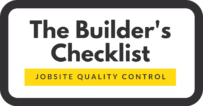The roof may be installed after the house is completely decked and all fascia and shingle mold is completed.
Roofing type and color is often controlled by deed restrictions. Please check with your architectural control board or other governing authority prior to purchising your roofing products.
The roofer supplies roofing nails or staples of sufficient size to completely penetrate the decking. Note that often, nails are the suggested method of attachment for your shingles. If the roof pitch will exceed 8/12, you may want to insist on nails instead of staples. This is because with steeper roofs, there is more stress on the staple that can cause the shingle to ‘rip’ at the point of attachment. Note that the possiblity increases as the roof pitch increases. Confirm nailing requirements with your roofing supplier or your engineer.
The roofer completely dries in the house by covering all roof decking with asphalt impregnated felt – either 15# or 30#. Then the roofer installs valley flashing or 90# felt at the valley areas. He installs shingles beginning at the fascia board. He uses four nails per shingle and follows the same pattern of drip lines over the entire roof.
Shingles should overlap in valleys at least 18″ up the valley. The roofer installs ridge cap shingles. He cuts straight lines at valley’s if only half-laced or if the valley metal is to be exposed. He installs vent flashings, ridge vents, and turban vents where required by the builder or per the plan He cleans up scrap shingles, shingle debris and shingle wrappers and puts it in the scrap pile in the front yard.
Items that you should check:
- Address is posted.
- Four nails have been used per shingle.
- There is a 1/2″ overhang at shingle mold or fascia.
- This allows water to shed away from the fascia – controlling water from blowing under the shingles, preventing rot, minimizing mildew stains, etc.
- There is a proper and consistent reveal on all shingles.
- The shingle rows should be uniform on all roof sections
- The edge of shingles on gable ends has been cut smoothly and is in a straight line.
- The gables are cut after they are nailed down. The roofer uses a hook-blade utility knife to cut these.
- Make sure the cut-line is straight.
- All of the ridge shingles are laying down.
- The staples or nails are not sticking up under shingles.
- Nails that are not completely flush can cause the shingles to raise up causing an unsightly appearance, let water penetrate and potentially shorten the life of the roof.
- The drip lines straight.
- Roof jacks, ridge vents, turban vents and power vents have been installed properly.
- Check to make sure that the shingles are cut away from the vents, but will still shed water properly.
- Valleys have galvanized flashing or 90# felt.
- Confirm which method was used. If the galvanized valleys are left exposed, they could be subject to rusting if the galvanized coating is damaged during construction – which could mean you have to paint them to protect them in the future.
- The nails or staples are approved for use with the shingles used.
- Roofing nails or staples should be galvanized or otherwise designed to not rust.
- Eyebrows are roofed, shingles tight under soffit or siding.
- Eyebrows are short horizontal ections of roof, usually placed at the end of a
- Gable as a design element. Most often, they still require flashing and shingles.
- The valley drip lines are straight.
- If shingles are cut away to expose valley metal, the cut should be straight.
- Dog ears have been cut at the fascia at hip areas.
- “Dog ears” are the first hip shingle that begins at the fascia. Since a hip is on an angle to the fascia, the first hip shingle must be cut to match the fascia.
- All shingles are laying down properly to the roof decking.
- Check for proper nailing of the underlayment (15# or 30# felt)
- Any mud has been washed off of roof.
- Mud is often carried up by workers. It creates a dangerous situation and should be dealt with promptly.
- Fireplace hole has been completely dried in.
- If present, the chimney/fireplace vent should be completely framed, and covered.
- Box window roof has been shingled.
- Box windows are often overlooked. Ensure that the flashing is present and that shingles are properly installed.
- Jobsite is clean.
